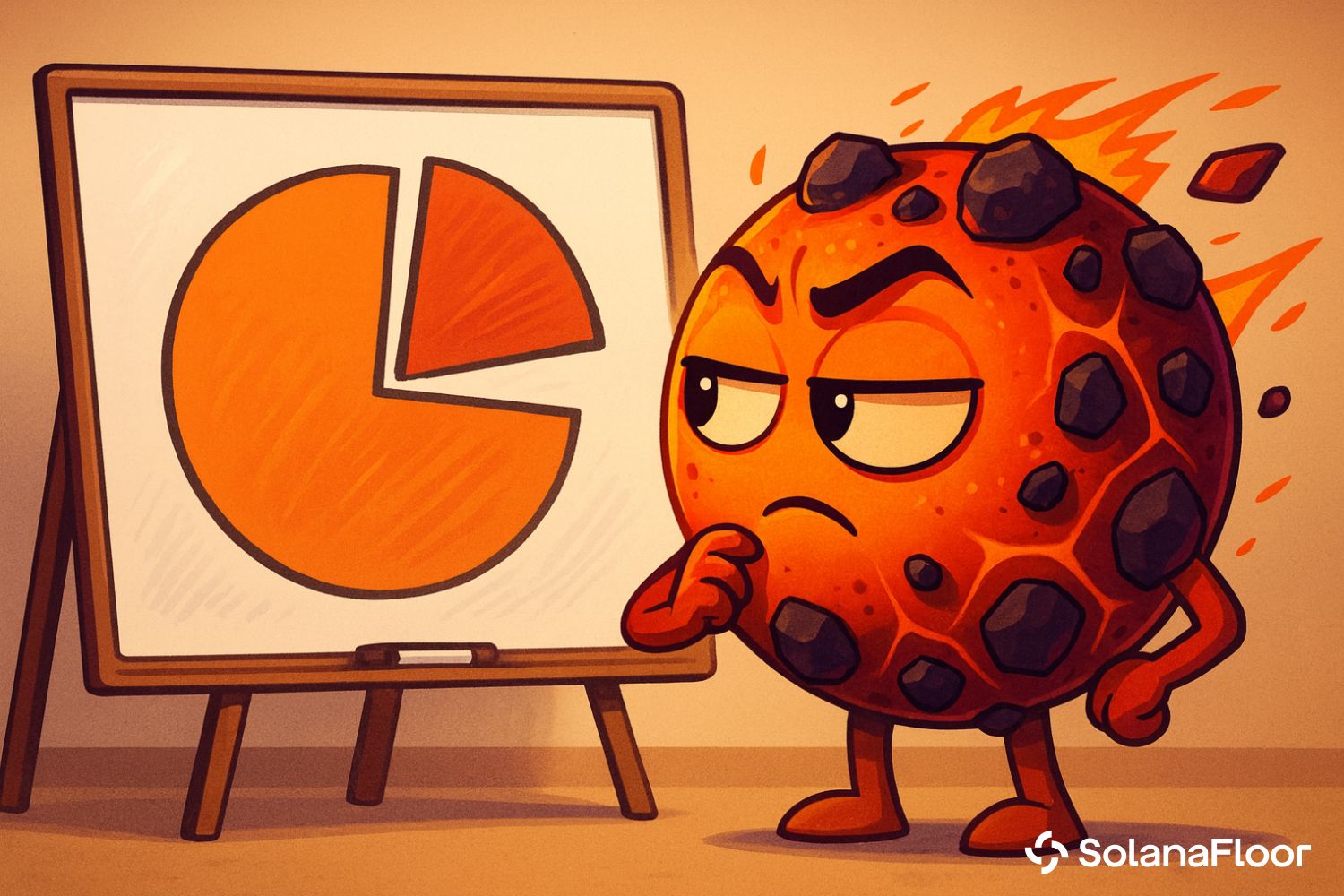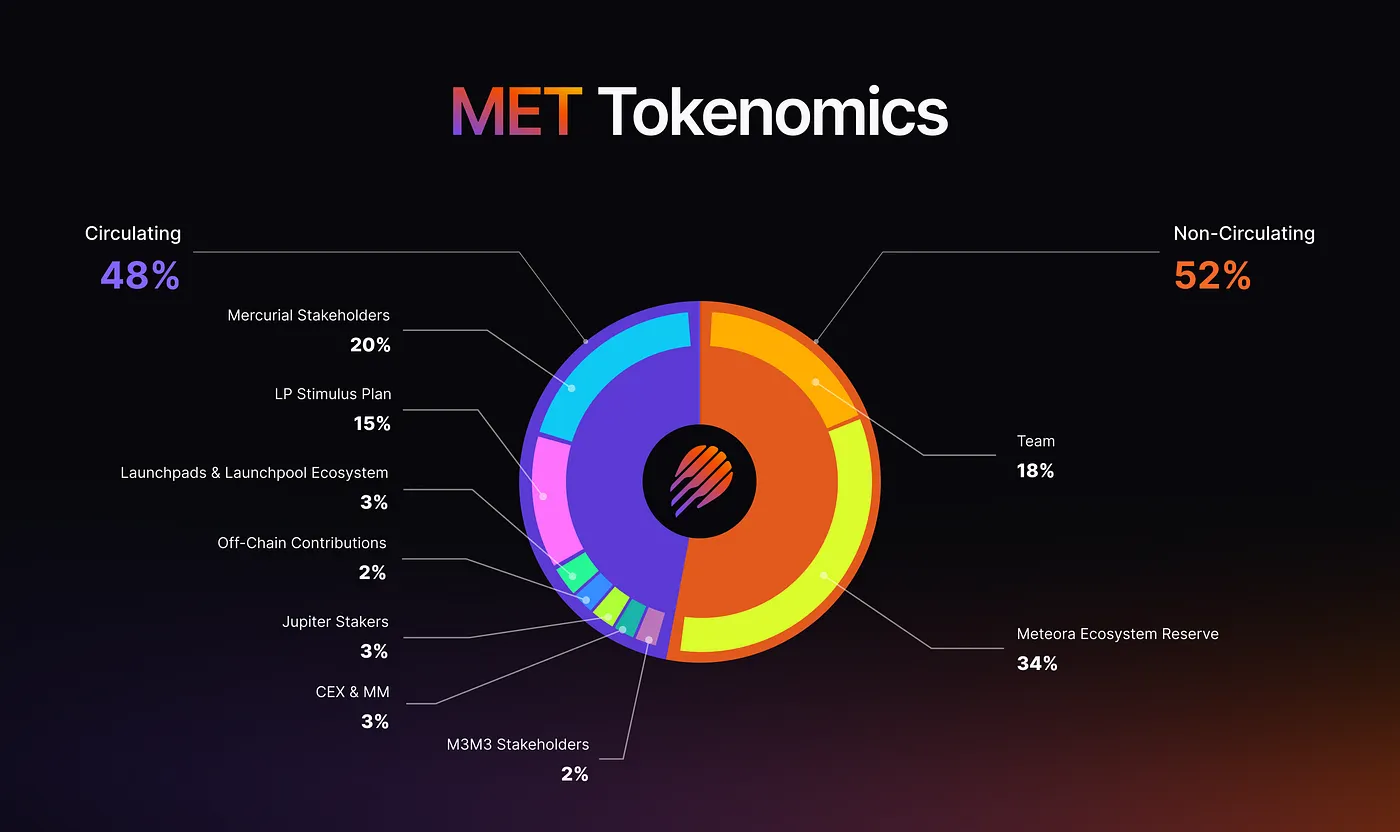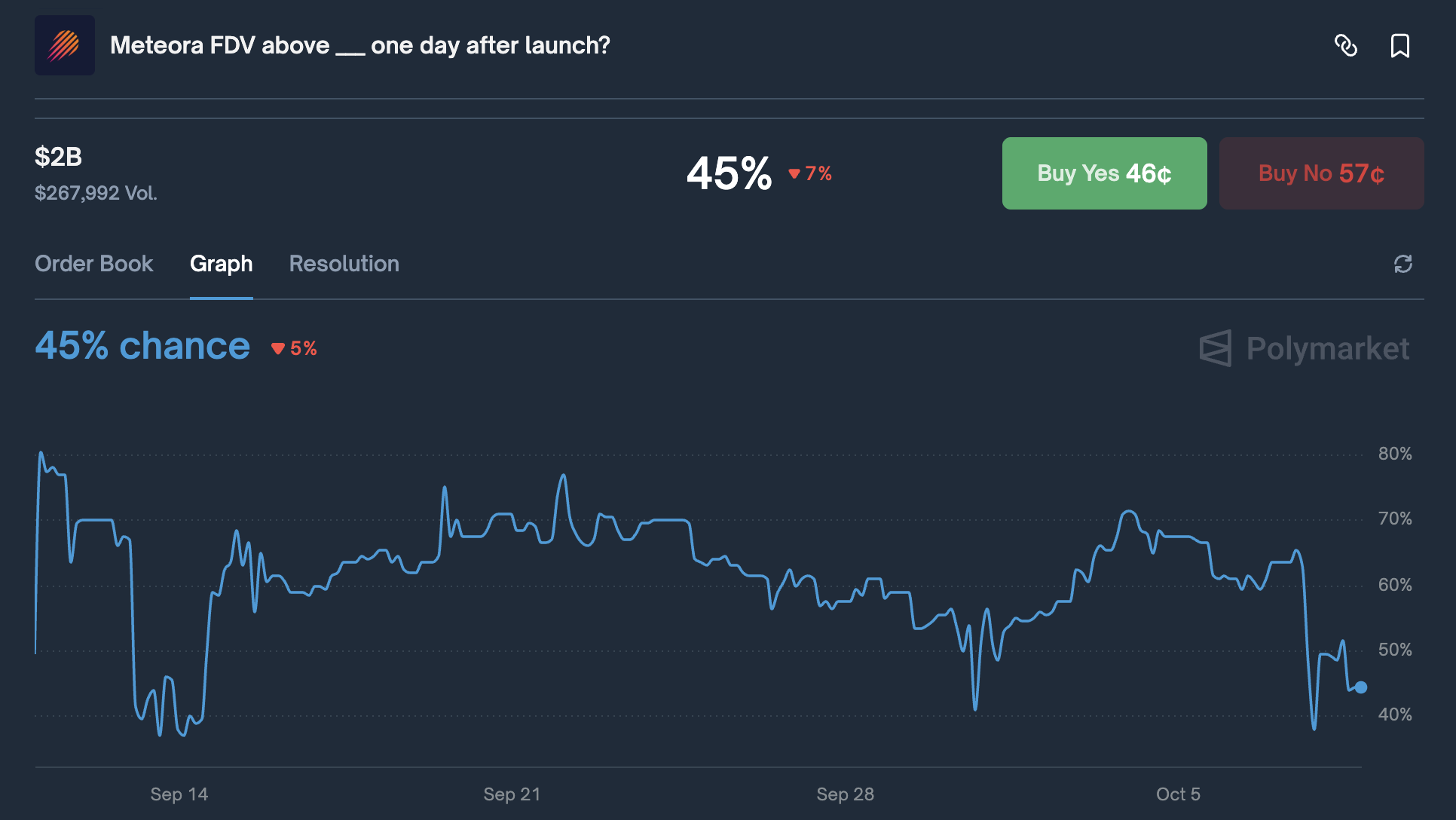
Meteora LP Army Divided Over $MET Tokenomics
Meteora’s eagerly-awaited tokenomics have allocated 20% of the supply to Mercurial stakeholders
- Published:
- Edited:
With TGE just 15 days away, Meteora has released $MET’s tokenomic breakdown, outlining the allocations for every subgroup of its expansive community.
Naturally, not everyone was happy with the distribution. While long-term supporters are optimistic about $MET’s high circulating supply at launch, concerns have been raised about the 200M tokens earmarked for Mercurial stakeholders.
$MET Tokenomics At A Glance
After first announcing its LP Stimulus package in December 2023, Meteora has finally confirmed the complete tokenomics ahead of its October 23 TGE. Evidently disheartened by the ‘low-float, high-FDV’ trend that has dominated distributions in recent years, $MET will launch with 48% of its total supply in circulation on Day One.

Outside the 150M tokens allocated to Meteora’s users, an additional 10% has been split between Meteora’s launchpad ecosystem, offchain contributors, $JUP stakers, and holders of $M3M3, a failed memecoin launchpad plagued by a wrath of extractive launches orchestrated by Kelsier Venture’s Hayden Davis.
Meteora’s team has allocated itself 18% of the supply vested over 6 years, while 34% has been set aside for future ecosystem incentives.
20% Allocation to Mercurial Sparks Heated Debate
As is often the case with tokenomics announcements, arguments have inevitably surfaced over allocations. Amongst Meteora loyalists, the biggest concerns regarding $MET distribution are centered around a 20% allocation to Mercurial stakeholders, or holders of $MER tokens before the project’s rebrand to Meteora.
Onchain data suggests that, at the time of the $MER token holder snapshot, ~58% of $MER supply was held by the top 10 wallets. While this reeks of insider activity at face value, it’s important to note that the largest of these wallets were controlled by FTX and AMMs like Raydium.

Meteora co-Lead Soju has since confirmed that these wallets will not be receiving $MET, distributing the $MER token allocation more evenly across the remaining wallets.
Fellow Meteora co-lead Zhen Hoe Yong has reaffirmed the project’s commitment to rewarding Mercurial stakeholders, arguing that without their support, neither Jupiter nor Meteora would exist today.
Pre-Market Trading Prices $MET at $1.5B FDV
With Meteora bringing much-needed clarity and finality to $MET distribution, various markets are aligning to give speculators a better indication of the value of their upcoming airdrop. Expectations that $MET will trade above a $2B FDV dropped sharply when traders saw that 48% of the supply would be circulating at launch, with Polymarket odds dropping sharply following the announcement.

$MET’s relatively large starting circulating supply suggests that the token may open trading at a lower price point, but will not face the looming threat of large unlocks throughout its vesting curve that plague many low-float, high FDV tokens.
Bearish sentiment towards $MET has been compounded by the team’s reluctance to firmly outline the token’s utility. Soju is yet to confirm whether Meteora will allocate a portion of platform revenue to token buybacks, a practice that has become commonplace across crypto markets.
Without any form of utility backing the asset, $MET may struggle hold an FDV higher than that of its competitors. Rival decentralized exchanges, like Raydium and Orca, have both employed buyback mechanics, with the former purchasing over $200M worth of $RAY to bring value to token holders.

Pre-market trading on alternative venues is consistent with the $1B-$2B FDV anticipated by Polymarket traders. $MET is currently exchanging hands at $1.69 in MEXC pre-market trading, although the platform’s low trading liquidity and trading volume make this a loose measure of $MET’s perceived value.
Read More on SolanaFloor
Solana's biggest DAT kickstarts its validator
Forward Industries’ Launches Solana’s 8th Largest Validator, Powered by DoubleZero
Does Solana Have a Stablecoin Problem?



